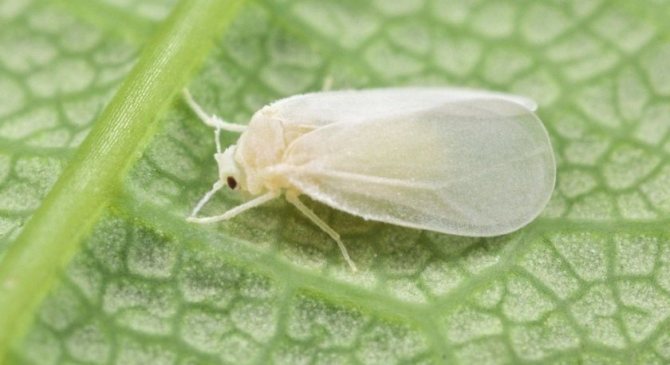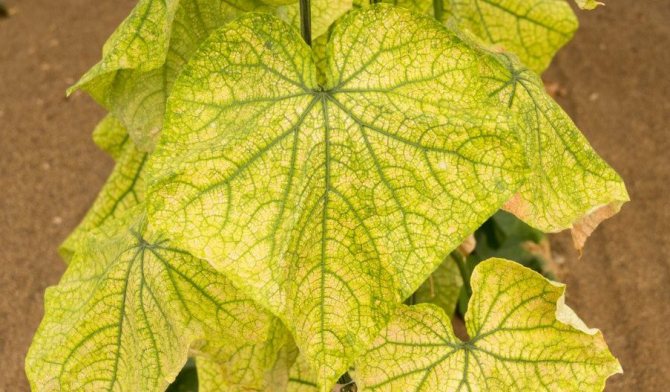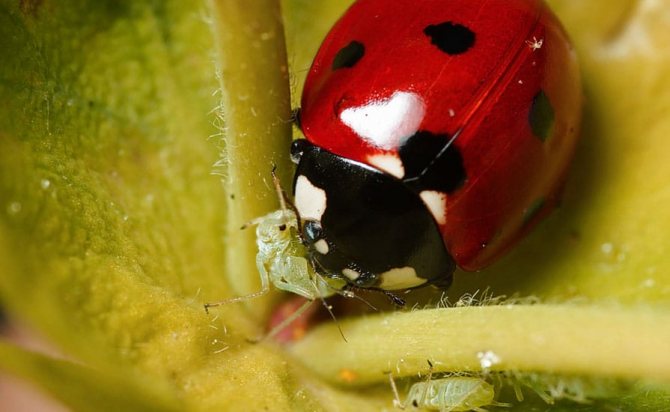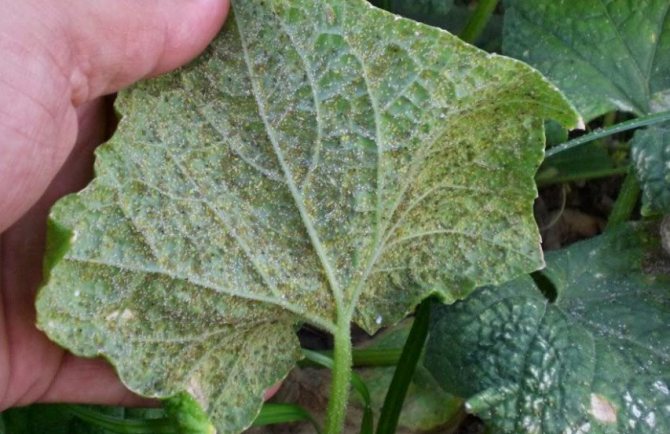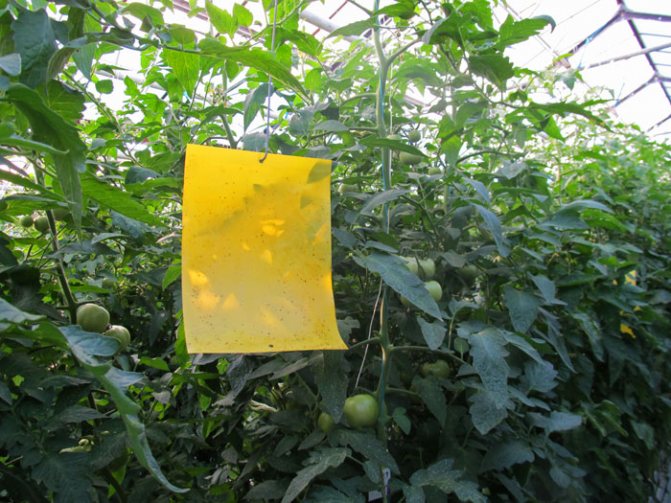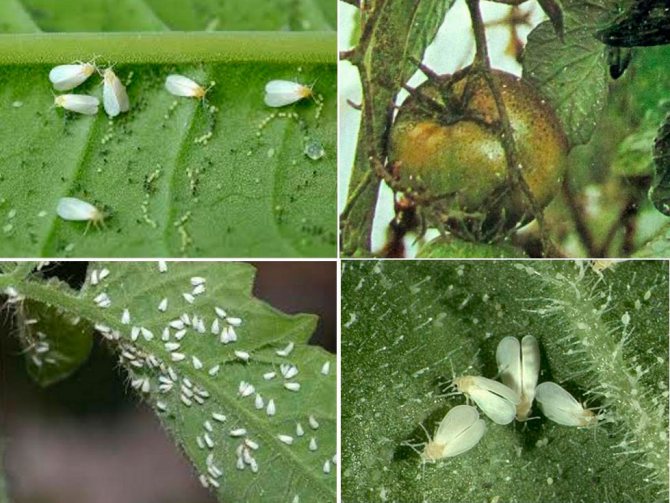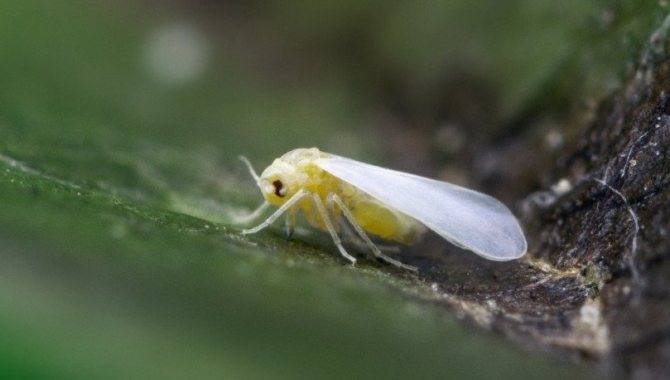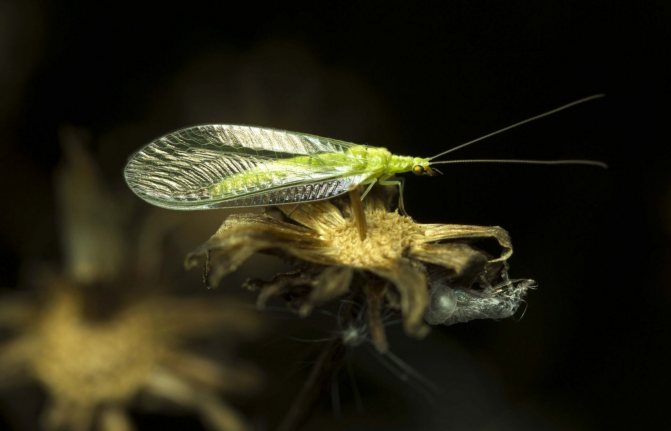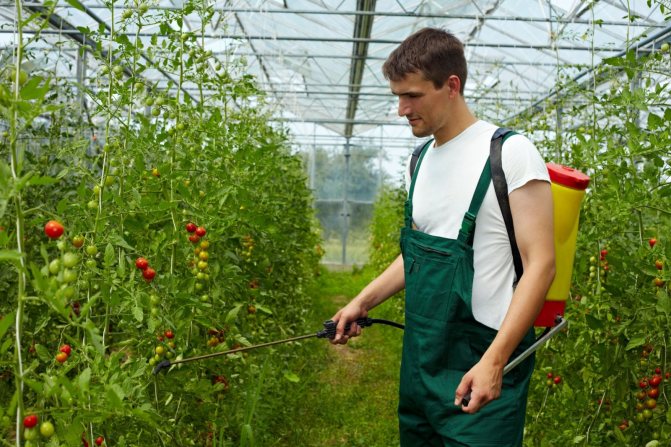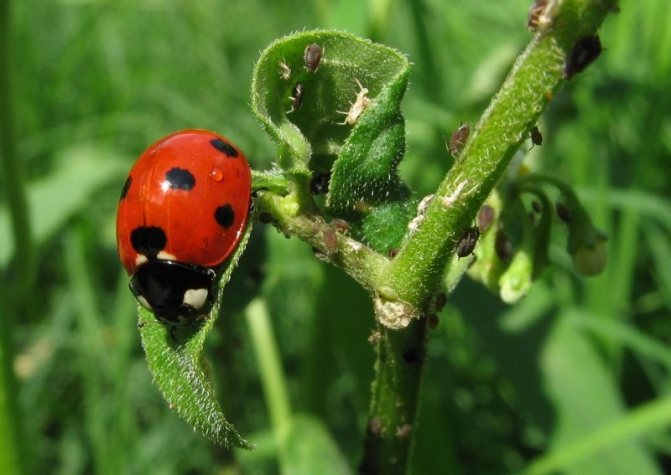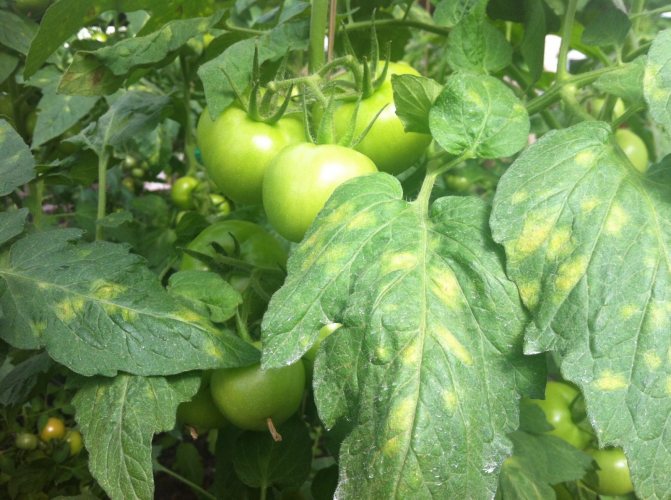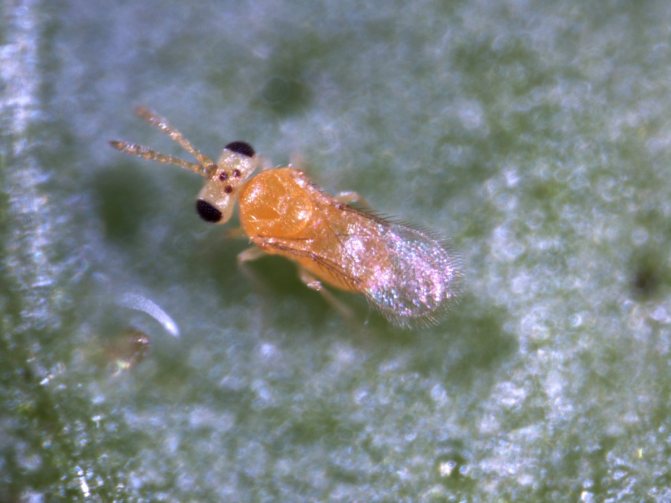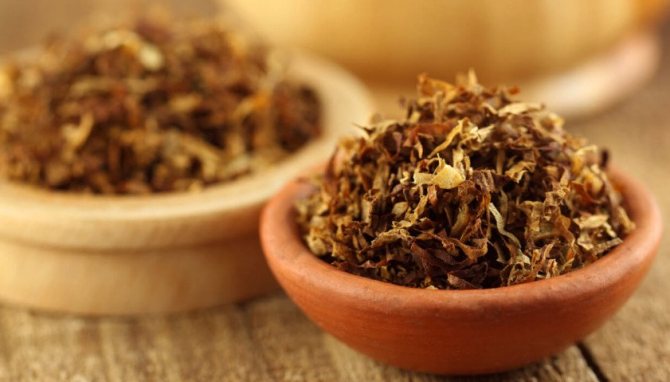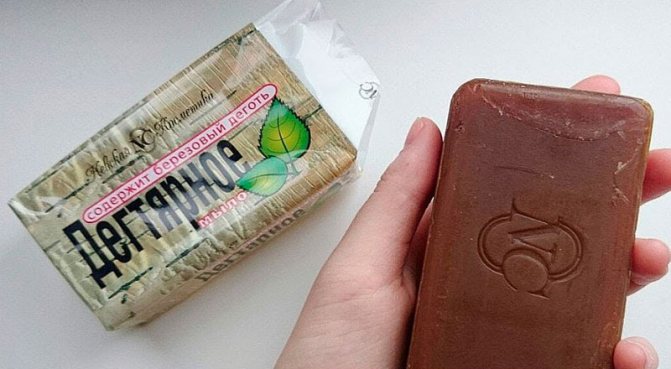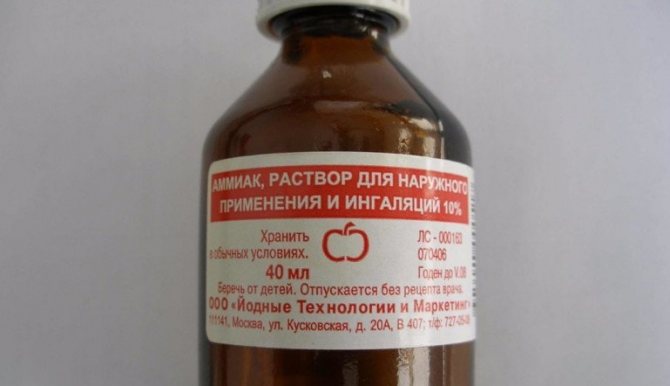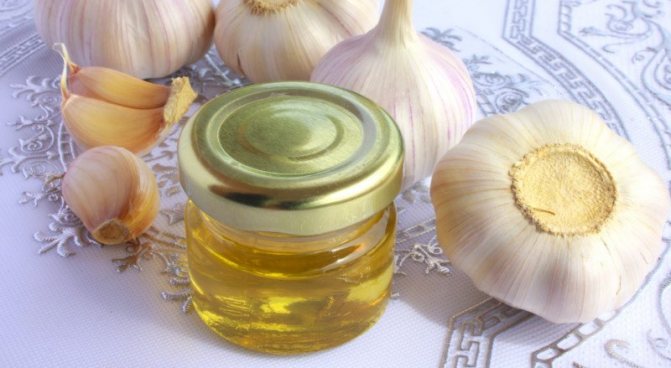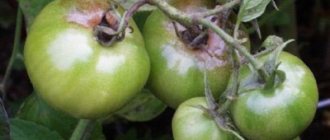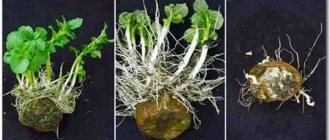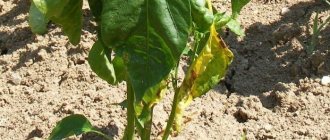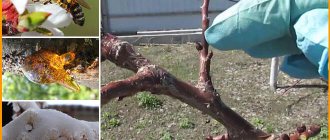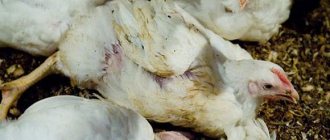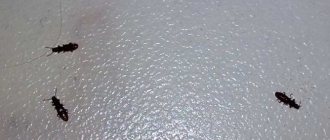Whitefly: description and habitat
Small, not more than 3 mm long, the butterfly lives and reproduces on the back of the leaves. Outwardly it resembles aphids, only the wings are not transparent, but covered with a whitish bloom.
There are more than 300 species of whitefly, but 2 varieties cause damage to plants: greenhouse and indoor. The insect prefers to live in warm places where the air is humid. Therefore, a greenhouse is an ideal place for a pest. Whitefly spreads with infected plants or seed.
The pest lives on all continents where there are temperate climatic zones with warm and moderately humid air masses. Butterflies widespread in our country affect mainly tomatoes, but they can spread to other crops.
The optimal living conditions for the whitefly are temperatures from +21 to + 28 ° C, air humidity about 60%. When the temperature falls below + 10 ° C, adult insects die. But the laid eggs remain alive, only severe frosts affect them.
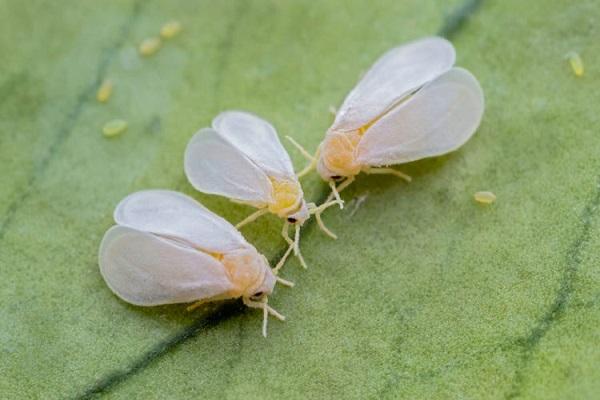
Traps
You can buy insect traps, but many summer residents prefer to make them with their own hands. For this, the plastic plate is painted orange. After drying, a layer of entomological glue or a mixture of petroleum jelly and soap (1: 1) is applied to it. A backlight is installed on the plate and a ready-made trap is suspended over the culture.
There is another way to make a trap. A light bulb with a red light is passed into a small wooden box (if there is none, the usual one is painted). The structure is suspended and a container with water is placed under it. As a result, butterflies rush to the light, burn themselves and fall into the liquid. So it is possible to destroy about 80% of individuals. A significant drawback of the trap is that it is effective only at night.
Why an insect is dangerous for a tomato
It is enough for one female to get into the greenhouse, so that after a short time the gardener grabs her head. Whitefly reproduces at a rapid pace, creating vast colonies on plants. An adult female is capable of laying up to 250 eggs.
Whitefly affects not only tomatoes, but also more than 300 species of agricultural plants.
Pest control is effective while the larvae are not yet covered with a cocoon. In this case, insecticides give a positive result. The whitefly cocoon is dense enough that chemicals cannot penetrate it.
The butterfly is extremely dangerous. She feeds on plant sap, is incredibly gluttonous. Having sucked out the juice, the insect leaves holes on the surface of the leaf plate. The tissues of a plant covered with such punctures cannot fully carry out photosynthesis. Sick tomatoes stop growing, dry out without timely treatment, die.


The danger of the whitefly is also that infection can penetrate into the holes it leaves on the leaves. The feeding insect defecates on tomatoes with a sticky substance, on which pathogenic sooty fungus begins to multiply in favorable conditions of the greenhouse.
Harm to tomatoes
It would seem, what harm can such small insects do? But, the whitefly mercilessly destroys vegetables, fruits, berries and flowers that are grown in greenhouses. The parasite feeds on plant juices.Since the whitefly reproduces very quickly, in a short time we get hordes of parasites, which first suck the juices from the sprouts, and then eat them with the leaves of the tomatoes. So the whitefly can eat up the entire crop in a matter of weeks.
More harm from honeydew produced by whitefly. Over time, it becomes a good breeding ground for pathogenic fungi, in particular - black black. Affected leaves on tomatoes first turn white, later turn black. As a result, the fruits lose their attractiveness, and the plant itself soon dies.
Whitefly, at all stages of its development, is an excellent carrier of most infections and diseases of tomatoes. The list of diseases includes: leaf curl, chlorosis, yellow mosaics, jaundice, deformation of shoots, leaves, fruit necrosis.
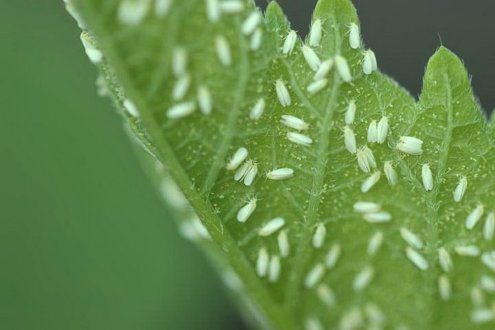

In some cases, the growth of shoots stops.
Tomatoes affected by fungal diseases are thrown away, the ground near the dead plant is disinfected. It is recommended to burn the tops of seedlings affected by whitefly.
Signs of the appearance of a whitefly
It is not difficult to identify a dangerous pest on tomatoes. You just need to pay attention to the presence of such symptoms:
- midges fly around the greenhouse;
- when touching tomatoes, a swarm of small light insects soars from the stems and leaves;
- translucent scales are visible on the underside of the leaf plates;
- plants become covered with dark spots - an obvious sign of the multiplication of a sooty fungus;
- tomatoes slow down growth;
- tomato leaves curl;
- fruits do not ripen, becomes whitish.
Ways to combat parasites in the greenhouse
Dealing with flying whiteflies is easier than dealing with larvae. However, butterflies do not harm tomatoes as much as their voracious babies. Therefore, they begin to fight the whitefly until the adults have laid eggs. You can remove the pest in several simple ways.
Agrotechnical
To get rid of the whitefly, many gardeners use mechanical methods that are safe for the environment and the person himself.
The insect is incredibly tenacious. The only natural factor that can kill a butterfly is frost. Therefore, it is recommended to open the greenhouse at the end of autumn, when the crop is harvested, and at the beginning of spring, when agricultural work has not yet begun, so that it is well cooled from the inside.
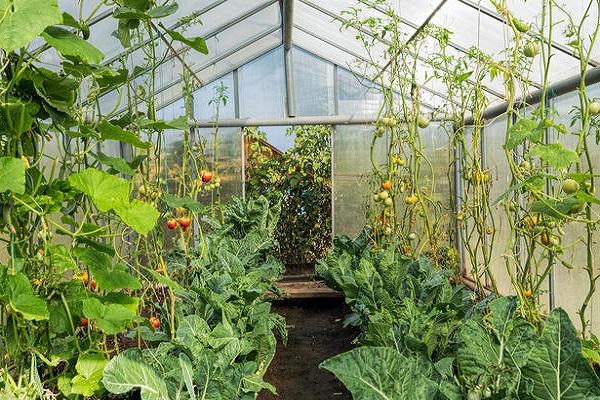

An effective way to kill hibernating larvae is to apply a thick layer of snow on top of the soil in the greenhouse. This measure gives a double positive result: insects freeze, and in spring, after the cold cover melts, the soil is saturated with moisture and minerals.
Also, in the fall, it is necessary to clean the greenhouse of plant residues, close up gaps, process materials and supporting structures with a disinfectant solution.
Fumigation
Many gardeners use a simple and effective way to destroy whitefly on tomatoes - a smoke bomb. It is enough to process the greenhouse twice during the season in order not to see the pest on the tomatoes. With the help of smoke, it is possible to defeat not only adults, but also larvae.
Rinsing with water
A soapy solution is used to process tomatoes. They are sprayed with bushes. Such a measure helps to eliminate the sticky excrement of insects, to reduce the likelihood of developing a fungal disease.
The larvae are washed out with water from a hose. After such a shower under the tomatoes, it is imperative to loosen the soil.
Manual removal
The safest, but also the most time-consuming, way to deal with the pest is to collect the adults by hand.
It is more convenient to remove the larvae from the leaves with a sponge moistened with soapy water. For its preparation, grated laundry soap is dissolved in hot water in a ratio of 1: 6. With the help of the tool, it turns out not only to remove the larvae, but also to remove the sticky excrement of the butterflies.
All leaves and stems of tomatoes are treated with a sponge, especially carefully wiping the lower part of the leaf plates, where the bulk of insects accumulate.
Chemical
Whitefly infested tomatoes are sprayed with insecticides. Chemicals have a toxic effect on insects not immediately, but after they are absorbed into plants, with juices they enter the body of voracious larvae. Therefore, to combat whitefly, not any, but certain drugs are used.
Chemicals
When there are too many pests, you need to use heavy artillery - biological and chemical methods. It is worth using them if folk remedies have not worked, and there is a serious risk to the harvest.
The best effect is given by such drugs:
We also recommend:
How to get rid of whitefly on indoor flowers
- Inta-vir;
- Zeta;
- Rovikurt;
- Fury;
- Cypermethrin;
- Top old;
- Decis;
- Ekamet;
- Unsuccessful;
- Fufanol;
- Karbofos.
Aversectin-based drugs have a depressing effect on whiteflies. You can buy Fitoverm, and double its dose (per liter of water - 10 ml of the drug). The whitefly will go away without leaving a trace, and the berries and vegetables from the crops will be edible.
Important! To enhance the effect of chemicals, you can add a little soap, shampoo, or detergent to them. They will help the solution adhere better to the plant.
Some drugs - Aktara, Confidor, Tanrek, Aktelik - are best used outdoors. If you use them indoors, they can be harmful to your health. It is better to process plants on a windless and cloudy day, without precipitation. Since the whitefly can develop immunity to a certain type of chemical, it is advisable to alternate them.


There are many effective remedies for garden pests on the market.
Each tool has its own peculiarities of application:
- Aktara. To get rid of the whitefly in the garden with the help of the drug, it is recommended to pour the solution under the bush, in severe cases - to treat the leaves of the plants with it. The procedure is carried out three times, with a break of seven days. If there are too many insects, you can remove them at one time using a concentrated solution (several times the recommended dose should be exceeded).
- Fitoverm. The solution is poured over the foliage of the bushes twice. This is enough to remove all individuals from the site.
- Actellic. A highly toxic agent with a strong odor. It is used in the garden in the open field.
- Confidor. An agent that kills the whitefly within an hour after application. Similar drugs based on the active ingredient - Provado, Marathon, Gaucho, Admir, Commander.
It should be borne in mind that together with pests, chemicals can destroy the necessary insects. Most drugs have a prolonged effect (up to a month). After processing, the harvest from the garden can be eaten only after a month. During the use of funds, you must strictly observe safety precautions.
Methods for the prevention and protection of greenhouses and tomatoes
Whitefly is one of the most tenacious pests. Therefore, it is better to prevent the appearance of a butterfly than to wage a hard fight with it.
Preventive measures:
- Disinfection of greenhouse structures, materials and equipment in early spring and late autumn.
- Fumigation of the greenhouse with a smoke bomb in the spring before planting seedlings.
- Removal and burning of plant residues in the fall after harvest. Digging the soil.
- Once every three years, disinfecting the soil in the greenhouse with a solution of copper sulfate - 200 g of the substance per 10-liter bucket of water.
- Avoiding thickening of tomato seedlings. Planting bushes at a sufficient distance from each other.
- Moisture control. Regular ventilation of the greenhouse.
- Spraying with insecticides in a prophylactic dosage.
The main condition for the successful fight against whitefly in the greenhouse is the timely detection of the pest.At the initial stage of butterfly breeding, even folk remedies help well. But if the defeat of tomatoes by a pest is strong, then insecticides are unlikely to be dispensed with.
Preventive measures
To prevent whitefly from appearing on cucumbers in a greenhouse, a number of rules should be followed:
- Use traps. A bright surface will attract insects, while a sticky one will prevent them from escaping.
- Experienced gardeners advise using the "Bud" remedy for prophylaxis.
- Examine seedlings carefully before planting in the ground. Purchase seedlings only from trusted producers. Check the leaves before purchasing.
- After harvesting, carefully dig up the soil, remove all plant residues and debris.
- Treat the ground with bleach or copper sulfate. Fumigate the greenhouse with tobacco smoke. Spray the frames with Bordeaux liquid.
- Freeze the greenhouse in winter: open it for 1-2 days when the temperature drops below -12 ... -15 ° С. In such conditions, insects die.
- Do not plant very densely and avoid extreme heat and humidity in the greenhouse. You can pull a gauze mesh over the vents in the greenhouse.
Do not be lazy to carry out prevention, and then the whitefly will not be scary for your cucumbers.

